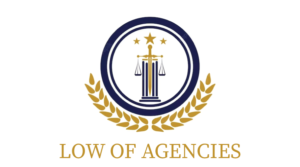Navigating through fog is a daunting challenge, often transforming even the most familiar roads into perilous stretches. When the haze envelopes the surroundings, visibility plummets, and the ability to judge distances or react swiftly to emerging dangers is severely compromised. We comprehend the profound impact of fog-induced accidents, and we aim to enlighten drivers about the common missteps that can precipitate catastrophic collisions. As seasoned Vehicle Accident Lawyers in Olympia, we’ve witnessed firsthand how ill-considered decisions in foggy conditions frequently result in devastating consequences.
Here are seven frequent errors made by drivers in foggy weather that escalate the risk of a disastrous accident:
1. Speeding in Reduced Visibility
One of the most prevalent blunders drivers make is maintaining their usual speed despite the challenging weather. Fog drastically diminishes visibility, making it nearly impossible to gauge the distance to the vehicle ahead, pedestrians, or obstructions lurking in the roadway. Proceeding too swiftly can lead to a tragedy before you even have the opportunity to respond. It is paramount to slow down, adapting your speed to the prevailing conditions. This holds especially true on highways or bustling streets, where the distance required to stop safely becomes significantly longer.
2. Neglecting to Activate Fog Lights
Under foggy conditions, regular headlights can bounce off the mist, creating a glare that makes seeing the road even more difficult. Many drivers overlook the use of fog lights, mistakenly relying on high beams, which exacerbate the problem. Fog lights, however, are specifically engineered to cut through the fog, illuminating the road immediately in front of your vehicle without generating that hazardous reflection. Be sure to use fog lights instead of standard headlights to improve visibility for both yourself and others on the road.
3. Tailgating in Low Visibility
No matter the weather, tailgating is inherently dangerous, but it is particularly perilous in fog. The dense mist obscures your view of the road ahead, limiting your reaction time. Without sufficient space between vehicles, you’ll find yourself unable to respond promptly if the car in front of you comes to an abrupt halt. Maintaining a safe distance is crucial to reducing the likelihood of a rear-end collision. In fog, it is essential to broaden the gap between your car and the vehicle ahead, allowing ample time to react.
4. Relying on High Beams
Although it might seem like a good idea to use high beams in low-visibility situations, they can actually worsen the conditions. The intense brightness of high beams reflects off the fog droplets, creating a dazzling effect that severely hampers your ability to see the road ahead. Instead, switch to low beams or fog lights, which help avoid this blinding glare. It is also worth noting that using high beams in fog not only impairs your vision but can blind other drivers, heightening the risk for all parties on the road.
5. Underestimating the Need for Caution at Intersections
Fog can warp your depth perception, making it challenging to assess when to stop or proceed at intersections. Some drivers, in a rush, fail to approach these junctions with the care they require. Always slow down when approaching intersections, and be prepared to halt—especially if the signal is yellow or red. Your inability to gauge the timing of approaching vehicles or pedestrians can lead to grave errors in judgment, making caution imperative.
6. Failing to Pull Over When Conditions Warrant
If the fog thickens to the point where you can barely see beyond a few feet, continuing to drive becomes an incredibly hazardous decision. Many drivers feel compelled to keep going, either due to a desire to avoid delays or the pressure of following traffic. However, in such circumstances, pulling over to a safe location is the wisest option. Switch on your hazard lights, remain off the roadway, and wait for the fog to dissipate. Your safety—both your own and that of others—should always take precedence over punctuality.
7. Distracted Driving in Foggy Conditions
Distracted driving is perilous under any circumstance, but in fog, it can be downright lethal. Taking your attention away from the road—whether to check your phone, adjust your music, or attend to any other non-essential task—vastly increases your chances of being involved in a severe accident. The dense fog demands your full concentration. Keep your focus on the road ahead, and avoid distractions at all costs to minimize the danger you face.
Conclusion
Fog presents a unique set of challenges to drivers, but by avoiding these common mistakes, you can significantly reduce the likelihood of becoming involved in a hazardous incident. At Ron Meyers & Associates, we are committed to aiding the victims of vehicle accidents in Olympia. If you or someone you care about has been injured in a fog-related crash, we are here to navigate the complexities of your legal case and fight tirelessly for the compensation you deserve.
Safety should always be your priority. Adjust your driving to the prevailing conditions, remain vigilant, and never underestimate the dangers that foggy weather can impose. If you’ve experienced an accident, do not hesitate to contact our Olympia Car Accident Lawyers for a comprehensive consultation. We stand ready to assist you in pursuing the justice you deserve.
